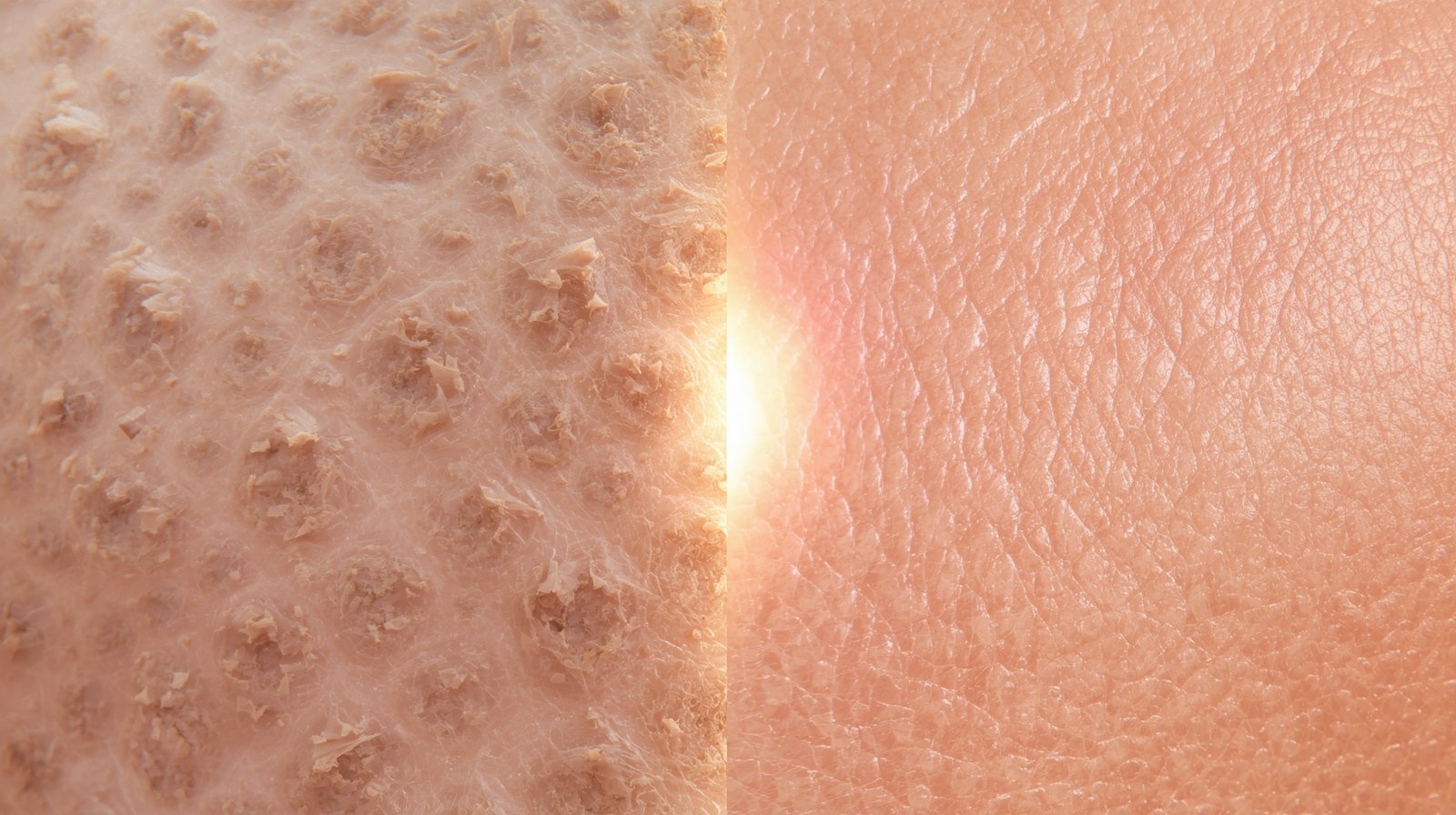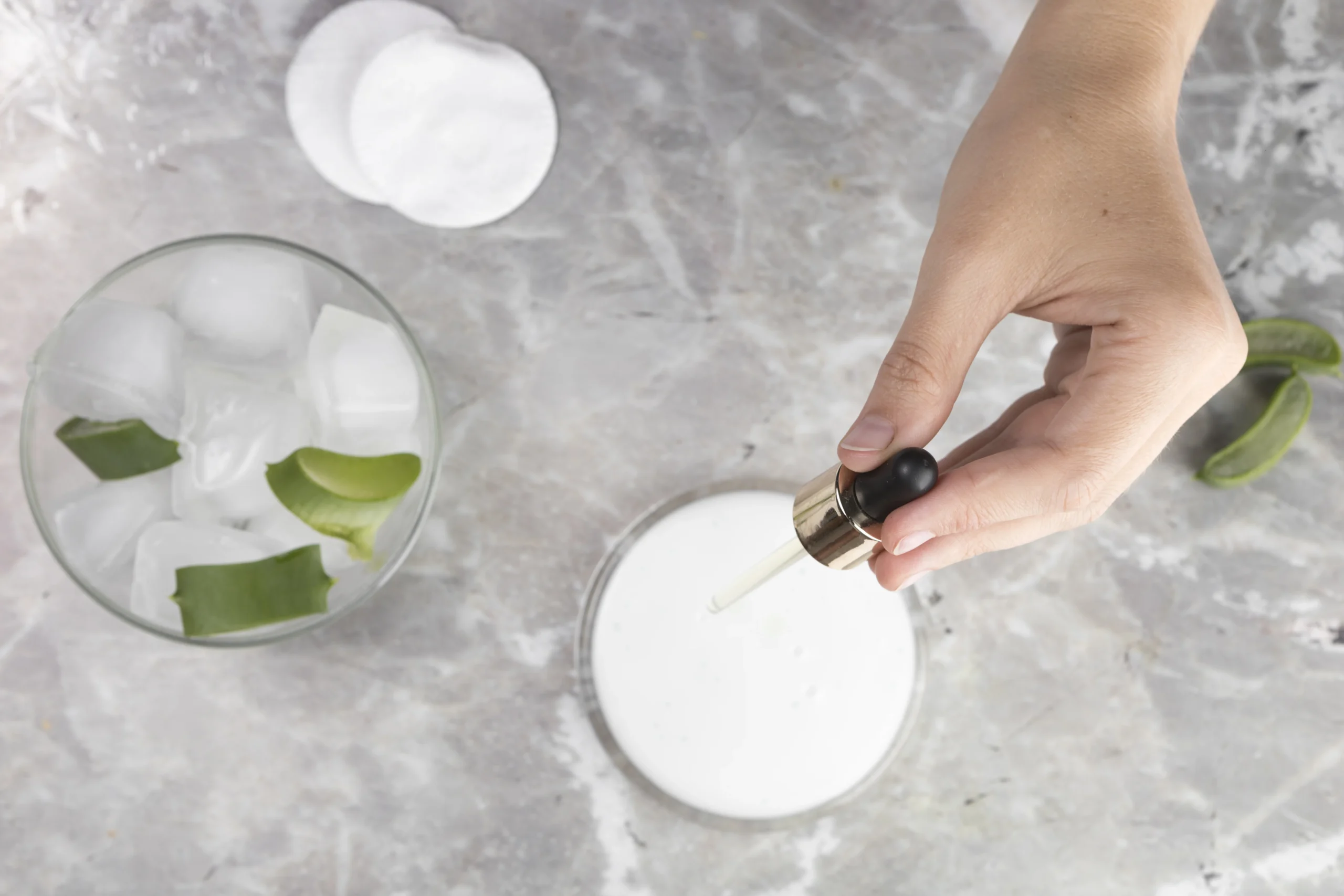Introduction
In the vast landscape of chemical compounds used in cosmetics, few have achieved the recognition and proven efficacy of glycolic acid. As a foundational ingredient in modern dermatology and skincare, it is celebrated for its transformative effects. But for formulators and discerning consumers, “What Glycolic Acid Actually Does to Your Skin” requires a deeper, scientific answer.
As a trusted manufacturer of high-purity chemical ingredients, Avid Organics provides this expert breakdown. This post will explore the precise mechanism of glycolic acid, its key benefits in formulation, and its versatile applications.
What is Glycolic Acid? The Chemical Breakdown
Glycolic acid is a member of the Alpha-Hydroxy Acid (AHA) family. It is a water-soluble organic compound naturally derived from sources like sugarcane, though it is typically synthesized for purity and stability in commercial applications.
Its primary distinction among all AHAs is its **small molecular size**. This is not a trivial detail; it is the very reason for its potent efficacy. Its small structure allows it to penetrate the skin’s outermost layer (the stratum corneum) more easily and effectively than other AHAs, such as lactic acid.
The Core Mechanism: What Does Glycolic Acid Do?
The primary function of glycolic acid is chemical exfoliation.
Your skin is in a constant state of renewal. New cells are generated in the deeper layers, and they gradually rise to the surface, where they die and are shed. This process, called cell turnover, can slow down due to age, sun damage, and other factors.
When this happens, dead skin cells build up, leading to a dull complexion, clogged pores, and uneven texture.
Glycolic acid intervenes by dissolving the “glue” (desmosomes) that binds these dead cells together. It gently un-cements them from the skin’s surface, revealing the newer, healthier, and brighter cells underneath.
Key Glycolic Acid Benefits for Skincare Formulations
When incorporated correctly into a formulation, glycolic acid offers a spectrum of benefits, making it a highly versatile ingredient.
Improves Skin Texture: By accelerating cell turnover, it significantly smooths and softens the skin’s surface, reducing the appearance of roughness.
Reduces Hyperpigmentation: This accelerated turnover helps fade dark spots, sun damage, and post-inflammatory hyperpigmentation (like acne scars).
Boosts Collagen Production: Glycolic acid’s benefits extend beyond the surface. It has been shown to stimulate fibroblasts in the dermis, the cells responsible for synthesizing collagen. This action can help reduce the appearance of fine lines and wrinkles over time.
Enhances Product Penetration: By clearing the path of dead cells, glycolic acid can improve the absorption and efficacy of other active ingredients in a formulation.
Applications: From Daily Washes to Professional Peels
The versatility of glycolic acid is evident in its wide range of product applications. The concentration and pH of the final formula dictate its use, from gentle daily products to intensive professional treatments.
The efficacy of these products depends directly on the **purity and stability** of the glycolic acid used—a primary focus for chemical manufacturers.
Quick Look: Glycolic Acid vs Niacinamide
| Product Form | Best For | Key Feature |
| Cleansers & Body Washes | Daily maintenance, managing body acne, prepping skin for other treatments. | Short-contact time; lower concentration (typically 3-8%). The glycolic acid body wash format is excellent for textured skin on arms and legs. |
| Toners & Solutions | Daily exfoliation, pH balancing, improving skin clarity. | Leave-on, low-to-mid concentration (typically 5-10%). Often formulated with soothing agents to buffer its effects. |
| Serums & Creams | Targeted treatment for aging, uneven tone, and texture. | Leave-on, higher concentration (typically 10-15%). Formulated for controlled delivery over several hours. |
| Professional Peels | Significant skin resurfacing, deep anti-aging, and scar reduction. | Professional use only; very high concentration (20-70%). Requires precise application timing and neutralization. |
Frequently Asked Questions (FAQs)
1. Is it good to use glycolic acid every day?
This depends entirely on the product’s concentration and your skin’s tolerance. A low-percentage (e.g., 5%) toner or cleanser may be tolerated daily by some, while higher-percentage serums are typically recommended for use 2-3 times per week. Over-use can lead to irritation and a compromised skin barrier. Always start slowly and observe your skin’s response.
2. Does glycolic acid remove dark spots?
Yes, glycolic acid is highly effective at reducing dark spots (hyperpigmentation). It works by accelerating the shedding of dead, discolored skin cells on the surface, allowing new, evenly-pigmented cells to take their place.
3. How to use glycolic acid cream during breastfeeding?
This is a critical medical question. While topical application of glycolic acid is *generally* considered low-risk as very little is absorbed into the bloodstream, you **must consult your physician or dermatologist** before using any active chemical ingredients, including glycolic acid, while pregnant or breastfeeding.
4. What should I avoid when using glycolic acid?
Sun Exposure: Glycolic acid makes your skin more sensitive to the sun (photosensitive). Daily, broad-spectrum SPF 30+ is mandatory.
Other Strong Actives: Avoid using it at the same time as other strong exfoliants (like salicylic acid or retinoids) unless the products are specifically formulated to be used together, as this can cause severe irritation.
Broken Skin: Do not apply it to broken, wounded, or sunburned skin.
5. Does glycolic acid remove tan?
Yes. A tan is the result of sun exposure causing pigment production (melanin) and darkening the outer layers of the skin. Glycolic acid helps to “remove” a tan by exfoliating these darkened, dead skin cells more quickly, revealing the un-tanned skin beneath.
Conclusion: A Cornerstone of Chemical Exfoliation
Glycolic acid remains a cornerstone of dermatological science for one key reason: it delivers consistent, proven results. Its small molecular structure makes it a powerful and efficient chemical exfoliant that can address skin concerns ranging from dullness and texture to hyperpigmentation and signs of aging.
From a gentle glycolic acid body wash to a potent professional peel, its function is scalable, reliable, and backed by decades of research.
Ready to formulate your next breakthrough skincare product?
Partner with Avid Organics for the highest purity glycolic acid and the expert technical support your R&D team needs to succeed. [Contact our team today to request a sample or discuss your formulation challenges.]
For more updates on our latest innovations, sustainability initiatives, and upcoming events, follow us on LinkedIn and stay connected through our official website. Stay tuned for exciting developments as we continue to push the boundaries of nutraceutical excellence!



